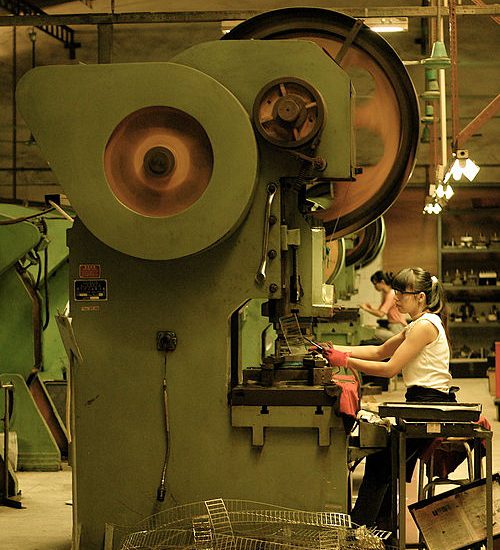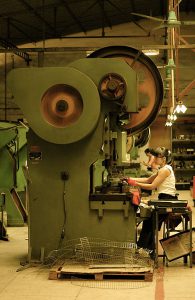- January 16, 2019
- Posted by: David Marshall
- Category: Manufacturing

As artificial intelligence and machine learning grows by leaps and bounds, and the field of robotics is light years ahead of where it was just ten years ago, industrial automation is becoming a regular part of the manufacturing process, as more companies are embracing a machine-based future.
The biggest reason for this sea change is productivity. Automation doesn’t have a fatigue factor or deal with a human’s work and sleep schedule. You don’t have to build in a hangover or illness. There are no labor issues, no arguments between co-workers, and no safety violations.
Providing everything is set up in a predictable manner, an automated factory will continue to operate at a consistent pace forever.
You can’t escape the fact that automation definitely improves productivity. It’s also cleaner, safer, and a lot more sustainable. It’s also cheaper in the long run, because you’re not dealing with hiring costs, salaries, benefits, and so on.
At the same time, automation is actually creating more high-paying jobs because the people who work with automation need a higher education than you’ve been able to get away with before, which means those people can command higher salaries — six-figures, in many cases — and earn more than factory workers have earned in the past.
Choose the RIGHT automation
 However, you can over automate. For example, you can buy a $50 million piece of equipment to make a $1 part when a $500,000 piece of equipment would do exactly the same thing. It would take you decades of human labor and the $500K machine to finally pay for that giant piece of equipment.
However, you can over automate. For example, you can buy a $50 million piece of equipment to make a $1 part when a $500,000 piece of equipment would do exactly the same thing. It would take you decades of human labor and the $500K machine to finally pay for that giant piece of equipment.
So where do you choose between $50 million and $500,000 equipment, or $500,000 versus a guy with a 60-year-old hydraulic press? How do you know which one is the better investment?
That’s a function of your ability to intelligently calculate the ROI of the different options. Most people have a tendency to fall in love with technology, so practicality goes out the window and they try to force the ROI to make it look good. That’s when you generally run into problems.
Let’s say the demand for your $1 part only requires 50 pieces a month. Why would you invest $500,000 for just 50 pieces? In today’s world, you could outsource it to a small company that specializes and buy 50 pieces from them each month. Or you could probably 3D print that piece for a fraction of the cost. If you did that, you would have a 3D printer that could make all your small parts for you because it’s so versatile. You could eliminate the need for several expensive pieces of equipment.
In our example, if you had a guy who operated a hydraulic press with 12 – 15 different dies, you’d have to maintain that machine as well as replace the dies every so often. Or you could replace the machine and dies with a 3D printer, and be able to create those 12 – 15 pieces on demand, as you need them.
You wouldn’t replace the operator, however, because you still need someone to operate the 3D printer, but you would need someone who’s educated about using it. So why not make it the guy who’s operated the previous machine for so many years? You’ve made the smart automation choice, and you haven’t replaced anyone. If anything, you’ve given him new knowledge and skills and a chance to earn more money than he was making before, and your company is more versatile than it has been for a lot less money.
I’ve been a manufacturing executive, as well as a sales and marketing professional, for a few decades. Now I help companies turn around their own business, as well as speak at conferences, trade shows, and chambers of commerce. If you would like more information, please visit my website and connect with me on Twitter or LinkedIn.
Photo credit: Taro Taylor (Wikimedia Commons, Creative Commons 2.0)

